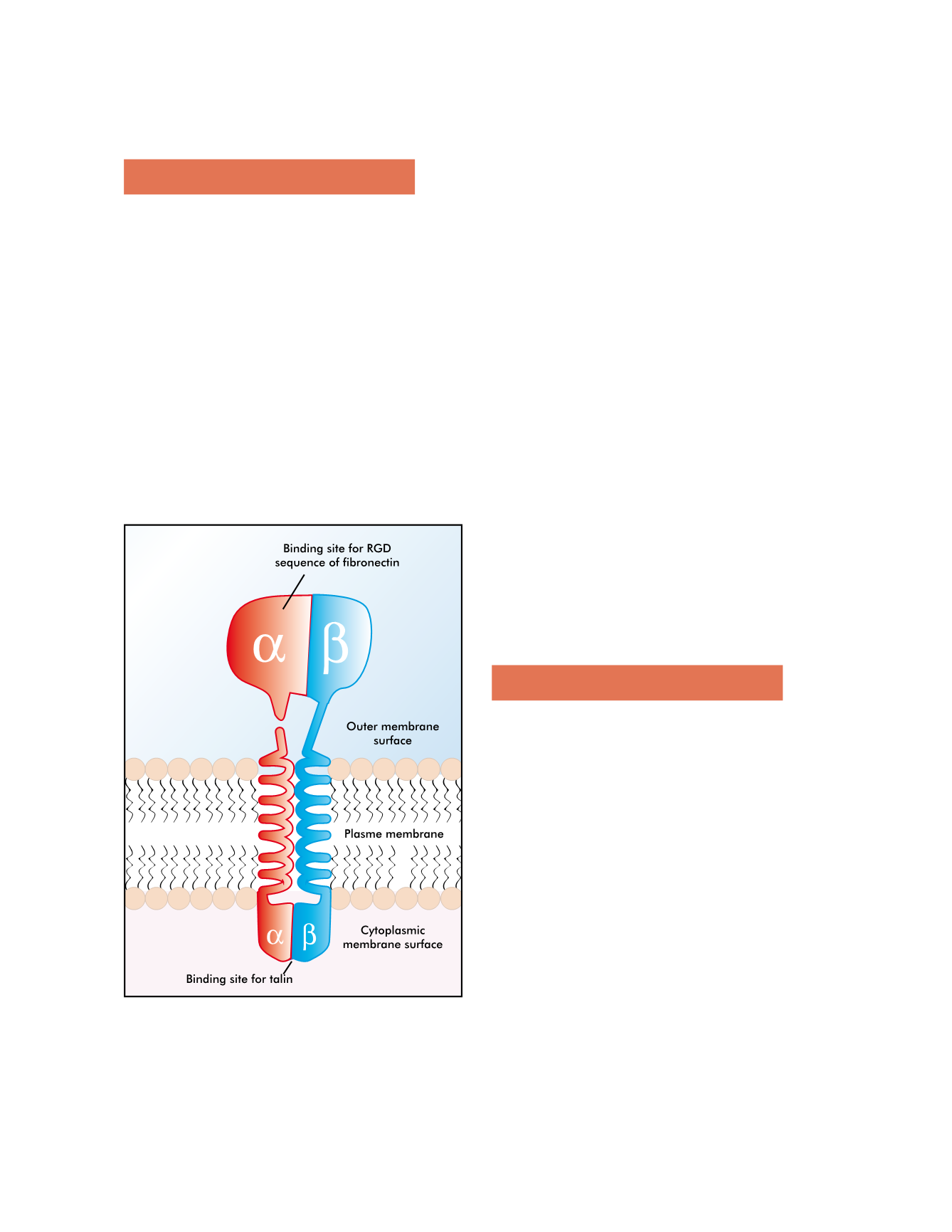
219
7. Anti integrins therapy
7.1 JSM6427 inihibitor of integrin
α
5
β
1 - Wet AMD
Intravitreal
Intravitreal JSM6427 (Jerini Inc) is a potent and selective
inhibitor of integrin
α
5
β
1. Animal studies have shown
an inhibition of choroidal neovascularization (CNV).
This suggests that JSM6427 may provide a new approach
for the treatment of age-related macular degenera-
tion in humans. Integrins are transmembrane receptors
composed of
α
and
β
subunits that mediate binding to
extracellular matrix or other cellular receptors (Fig. 3).
Blocking angiogenesis through inhibition of integrin-
mediated signaling has the potential to inhibit the cel-
lular responses to growth factors as well as to cytokines
and other inflammatory mediators
(30)
.
7.2 Volociximab:
α
5
β
1 Antagonist - Wet AMD
Intravitreal
Volociximab (Ophthotech) is a high-affinity chimeric
monoclonal antibody (Mab) that inhibits the functional
activity of alpha-5 beta-1 integrin found on the endothe-
lial cells involved in the formation of blood vessels.
“Volociximab binds to
α
5
β
1 integrin and blocks the bind-
ing of
α
5
β
1 integrin to fibronectin, thereby inhibiting a
pivotal interaction required for angiogenesis. Volociximab
administration has resulted in strong inhibition of rabbit
and primate retinal neovascularization. In monkeys with
laser-induced choroidal neovascularization (CNV), volo-
ciximab significantly inhibited CNV proliferation and
reduced the degree of lesion formation. In a rabbit model,
volociximab administered either intravenously or intravit-
really prior to the onset of neovascularization significantly
reduced angiogenesis as compared to control. Similar anti-
angiogenic efficacy with volociximab has also been shown in
multiple preclinical models of tumor angiogenesis.”
(31)
A phase I open-label, multicenter study of volociximab
is currently on going. The objectives of this study are
to evaluate the safety, tolerability, and pharmacokinetic
profile of volociximab intravitreous injection in sub-
jects with subfoveal choroidal neovascularization sec-
ondary to age-related macular degeneration (AMD)
32)
.
8. Vascular disrupting agents
Zybrestat (OXIGENE Inc.) is a synthetic prodrug,
Combretastatin A4 Phosphate that is converted to
Combretastatin inside endothelial cell. It was origi-
nally derived from the root bark of the South African
Bushwillow tree (
Combretum caffrum
).
The mechanism of action is a vascular disrupting agent
(VDA) by a dual action: tubulin depolymerizing agent
and cell junction disruption (Fig. 4). These actions upset
the physical structure of the existing blood vessels.
VE-cadherin disrupts the VE-cadherin/b-catenin com-
plex interfering with cell-cell contact and induces loss
of cell-cell contact that increases vascular permeability,
leading to increased interstitial pressure and additional
loss of blood flow. Tubulin depolymerization acts at the
colchicines-binding site of the b-subunit of endothe-
lial tubulin, inducing disruption of the endothelial
cytoskeleton that results in shape changes. Normally
flat, the endothelial cells become more spherical, and
this decreases the size of the blood vessel lumen, causing
decreased blood flow and thrombosis. It seems that the
AMD Future Perspectives: New promising drugs
Figure 3 - Alpha and Beta subunits of integrins, are transmembrane
proteins. In the outer surface the subunits have an adhesive glycopro-
tein that interact to form a binding site. In the inner site of the cell the
subunits binds with the cytoskeleton.


